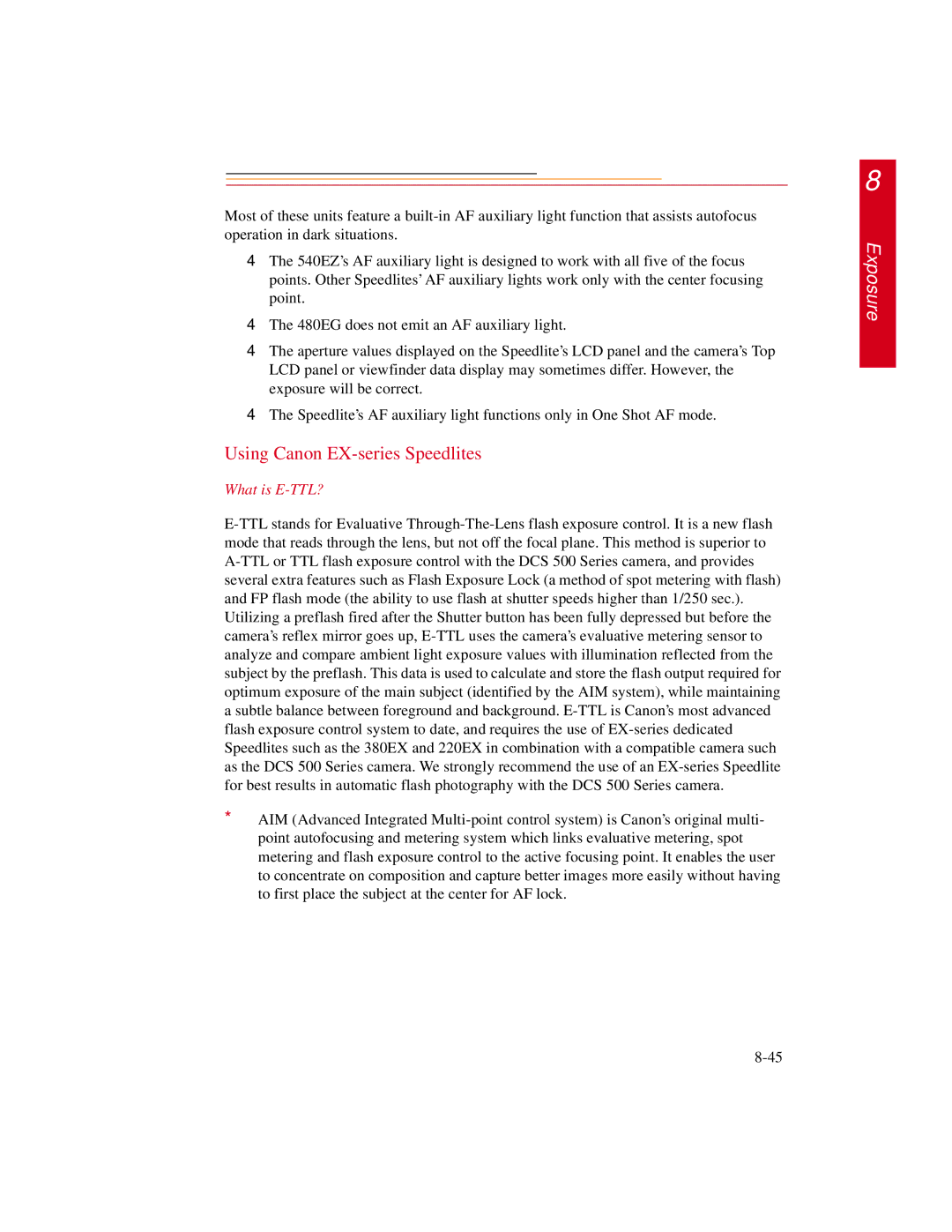
Most of these units feature a
✔The 540EZ’s AF auxiliary light is designed to work with all five of the focus points. Other Speedlites’ AF auxiliary lights work only with the center focusing point.
✔The 480EG does not emit an AF auxiliary light.
✔The aperture values displayed on the Speedlite’s LCD panel and the camera’s Top LCD panel or viewfinder data display may sometimes differ. However, the exposure will be correct.
✔The Speedlite’s AF auxiliary light functions only in One Shot AF mode.
Using Canon EX-series Speedlites
What is E-TTL?
☛AIM (Advanced Integrated
8
